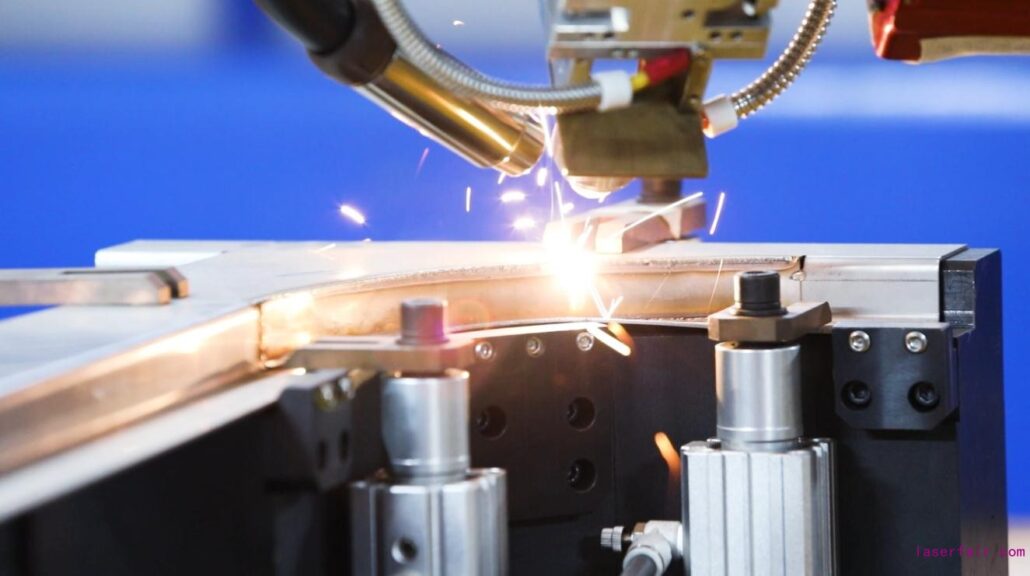Projects
Application of laser welding technology in precision electronic products
In recent years, with the rapid development and upgrading of electronic, electrical and digital products, more and more important parts of electronic products are produced towards the trend of miniaturization, and the demand for high-precision processing methods is increasing. As a new technology of precision welding technology, laser tin welding technology has ushered in rapid development.

Heating principle of laser welding technology
Compared with the soldering iron process, the laser welding technology is more advanced, and the heating principle is also different from the former. It is not simply to replace the heating part of the soldering iron. The laser belongs to the “surface heat release”, and the heating speed is extremely fast. Laser soldering is a laser soldering technology that uses laser as a heat source to heat the solder pad and melt the tin wire or solder paste to complete soldering. The main feature of laser soldering is to use the high energy of laser to rapidly heat local or small areas to complete soldering. Compared with traditional hot rod soldering and electric soldering iron soldering, laser soldering machine has the characteristics of high processing accuracy, high efficiency, high yield and low production cost.
Advantages of laser welding technology
- Kinetic energy synchronous control, various welding waveform settings, precise control of focus size and positioning, and convenient maintenance automation technology can produce high-precision and stable welding quality.
- It does not need all auxiliary welding materials. The welding quality is high, and there is no blowhole. The welding compressive strength and ductility are equal to or even more than the butt weld.
- High height-width ratio, less welding, small thermal hazard and small deformation of raw materials.
- The welding is smooth and beautiful. There is no need to solve the problem after laser welding, only a simple solution is needed.
- It can maintain multi-channel fiber output and multi-directional laser welding.
The necessity of laser soldering equipment application
With the improvement of IC (Integrated Circuits) chip design level and manufacturing technology, SMT (Surface Mounting Technology) is developing towards the direction of miniaturization with high density and high reliability. Therefore, it also poses a challenge to the traditional welding method. The new laser soldering will become a new weapon in the field of welding. At present, the center distance between the pins of QFP (Quad Flat Package) has reached 0.3mm, and the number of pins of a single device can reach more than 576. This makes the traditional welding methods such as gas phase reflow welding, hot air reflow welding and infrared reflow welding easy to “bridge” the adjacent lead solder joints when welding such fine-spaced components.
In addition, in the traditional wire welding field, the progress of IC technology has promoted the process and technology development of wire processing on the other hand. For example, in the traditional connector field, the further miniaturization of PCB and terminal size makes the traditional hot bar soldering and soldering iron soldering process bottleneck. In addition, due to the traditional contact welding processes such as HOT BAR welding and electric soldering iron welding, there is a hidden danger of damage to the wire and transmission performance. In the field of high requirements for wire transmission quality and speed, manufacturers try to avoid using these methods for welding.
At the same time, the emergence of some new MEMS devices, such as mobile phone camera modules, makes the soldering of electronic components break away from the traditional concept of plane welding and develop towards three-dimensional space welding. For such devices, contact processing methods such as electric soldering iron are prone to interference, requiring non-contact and high-precision processing methods. Therefore, more and more people have studied new welding. Among them, laser soldering technology, with its unique heat source properties, extremely fine spot size, and local heating characteristics, helps to solve such problems to a large extent. Therefore, it has also attracted the attention of more and more manufacturers.
At present, laser soldering technology and equipment are gradually mature, and different laser applications are developed according to different product requirements, such as laser ball soldering machine, laser wire soldering machine, laser paste soldering machine, etc. The market is gradually developing towards laser soldering.
About HGSTAR: HGSTAR is is a sub-brand of HGTECH.HGTECH the pioneer and leader of laser industrial application in China, and the authoritative provider of global laser processing solutions. We have comprehensively arranged laser intelligent machine, measurement and automation production lines, and smart factory construction to provide overall solutions for intelligent manufacturing.



































